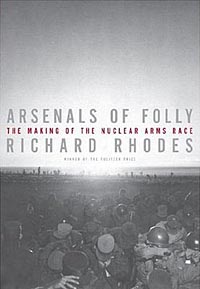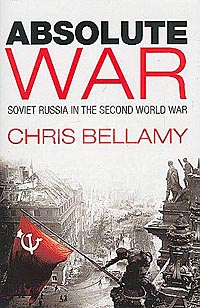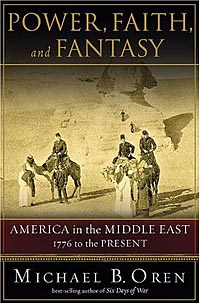Hot Off the Press
Scholars of Warfare
Whether it’s conducted on the ground, in the air, or simply through boasting about one’s expansive arsenal, war provides nearly limitless material for historians, political scientists, and pundits alike. They’ve certainly put their noses to the grindstones in recent months, putting out tome after weighty tome on international conflict. Five of these works-totaling more than 3,400 pages of analysis, reportage, prediction, and prescription-constitute this month’s column.

The Seventh Decade: The New Shape of Nuclear Danger
by Jonathan Schell
In The Seventh Decade: The New Shape of Nuclear Danger, Jonathan Schell argues that there’s one particular kind of war we should be concerned with today: the nuclear variety. His previous book on the subject, The Fate of the Earth, warned of imminent nuclear disaster back in the 1980s, when Cold War tensions ran quite hot indeed. Though the specific fears of that decade have tapered off, new and unsettling players in the nuclear game, including North Korea and Iran, have motivated the author to make an updated statement for the new millenium. As a frequent contributor to The Nation, Schell also bears the animus toward the United States’ own foreign policy required of anyone associated with that organ. Aggression will, to Schell’s mind, only stoke more aggression, and if there’s to be less proliferation, the first thing to cut out is our tendency toward preemption.

Arsenals of Folly: The Making of the Nuclear Arms Race
by Richard Rhodes
Speaking of warheads and the missiles that carry them, Pulitzer-winner Richard Rhodes’s new Arsenals of Folly: The Making of the Nuclear Arms Race also lays the blame for Cold War-era world endangerment at the door of the United States, although that’s also where he lays the praise for the semi-disarmament that followed. Presenting the historical material in a tone nearly suitable for a techno-thriller, Rhodes attributes the Soviet Union’s increased readiness to push the button to the stockpiling of arms initiated by advisors surrounding Ronald Reagan: Names like Wolfowitz, Cheney, and Rumsfeld may ring a few bells. What keeps matters from crossing the point of no return? To Rhodes’s mind, it was Reagan himself, and his second-term change of heart about proliferation. Some will disagree with Rhodes’s assessment of events, but there’s no doubting the sheer volume of data he brings to the table: It’s a popular book, sure, but one bearing 308 footnotes.

Absolute War: Soviet Russia in the Second World War
by Chris Bellamy
Even more enthusiastic about his footnoting, military science and doctrine professor Chris Bellamy stays on the subject of the Soviet Union but jumps a generation back in time with Absolute War: Soviet Russia in the Second World War. Not content to let World War II be popularly perceived as a struggle between only the United States, Great Britain, Germany, and Japan, Bellamy has exhaustively documented Russia’s involvement in history’s most widespread conflict, known there as the Great Patriotic War. Employing sources previously unreachable inside the ruins of the Soviet Union’s and East Germany’s sprawling communist bureaucracies, Bellamy frames the action on the Eastern Front as an absolutely essential component of the war’s end and, indirectly, the end of the U.S.S.R itself.

Masters of the Air: America’s Bomber Boys Who Fought the Air War Against Nazi Germany
by Donald L. Miller
But let’s not forget what America put into it. History professor Donald L. Miller chronicles the work of the U.S. Eighth Air Force, England’s bombing partner, in Masters of the Air: America’s Bomber Boys Who Fought the Air War Against Nazi Germany. Miller’s thesis approaches the United States’ bombers as an equally vital key to the Allies’ victory. Glorification, however, is not his goal: A great deal of the text describes just how miserable conditions were for the pilots themselves, let alone how miserable conditions were for the German civilians on the receiving end of their bombs. That the war had winners at all, the book argues, is a fact for which we can thank the U.S. Eighth, but nobody, on any side, emerged from the ordeal unscathed.

Power, Faith, and Fantasy: America in the Middle East 1776 to the Present
by Michael B. Oren
Though many consider the United States’ struggle to come up with a coherent Middle Eastern policy a relatively recent phenomenon, one can look quite far back in American history-past the Cold War, past both World Wars, past even the Civil War-and see that it was ever thus. Michael B. Oren, best known as the author of the bestselling Six Days of War: June 1967 and the Making of the Modern Middle East, takes on this very long engagement in his new project, Power, Faith, and Fantasy: America in the Middle East 1776 to the Present. A dry title, perhaps, but far from a dry subject: The region that is the site of the United States’ current foreign war was also the site of its first, and the Middle East has both captivated and frightened Americans ever since. Whatever this country’s obligations in that part of the world are now, they’re merely one chapter of an epic story-and a continuing one.



